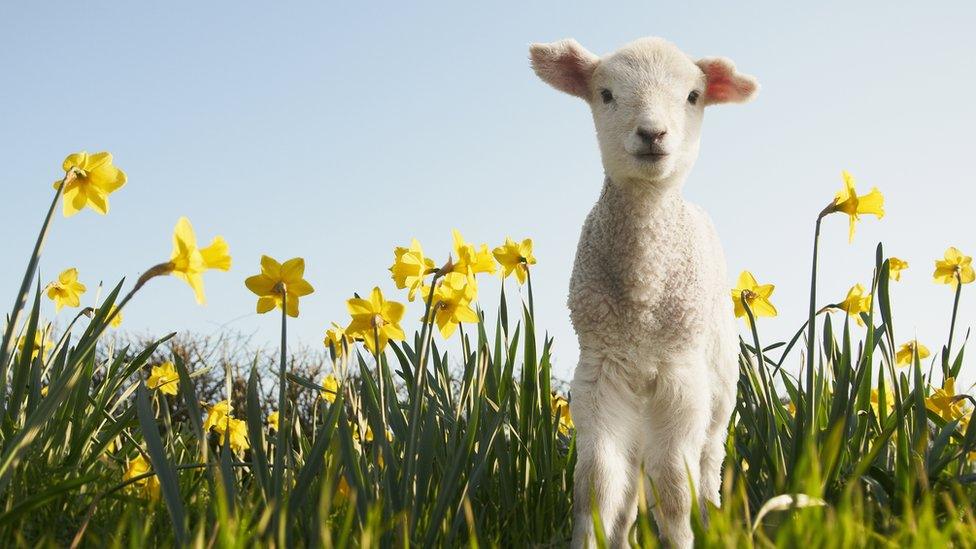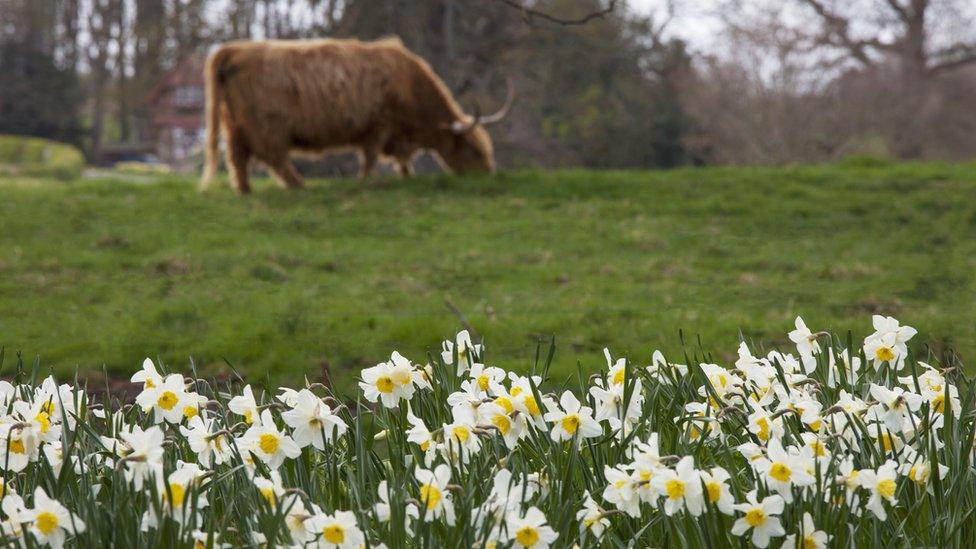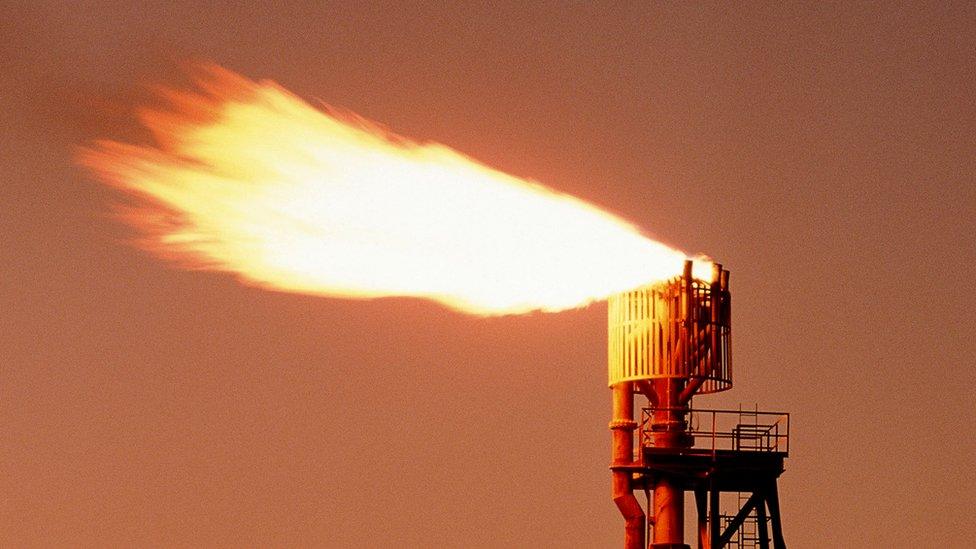Climate change: Could daffodil diet for livestock help?
- Published

Greenhouse gas methane is produced by livestock such as cows and sheep when they burp
Daffodils have long been seen as a symbol of Wales - but could they also be used to save the climate?
Researchers are testing a new method of using Wales' national flower to cut the level of methane produced by livestock.
Methane is the second most common greenhouse gas after CO2, and is released by livestock, such as cows and sheep, when they burp.
Tests show a chemical extracted from daffodils can reduce methane production by a third when added to cow's feed.
Half of methane emissions in the UK come from cows, while they account for 14% of greenhouse gases globally, BBC's Countryfile reported.
Scientists from Scotland's Rural College have successfully extracted a chemical from the flower called haemanthamine.
In the laboratory, using an artificial cow's stomach, they showed it could reduce emissions by 30% when added to feed.
It is now being tested at a number of farms, including one belonging to Andrew Evans, in Welshpool, Powys.
"It's the national flower of Wales isn't it, so we're in Wales, so we're quite keen on that," he said.

Each cow can produce around 500 litres of methane every single day
"I think this is doing our bit - being part of a trial that could potentially mitigate the impacts of methane in the environment," added Mr Evans.
Abi Reader, deputy president of farming union NFU Cymru, said the trial "offers a lot of promise" but said it was important that the process was properly assessed.
"As livestock farmers we're definitely up for looking for different alternatives for reducing methane emissions," she said.
"We need to make sure it's safe for them to eat, we need to make sure it's economical and we need to make sure what it is going to do, and reduce that methane."
- Published6 May 2021

- Published15 May 2023
